AR marketing might not seem like the most obvious use of a metaverse-related technology. But marketing is, in many ways, about creating worlds within people’s imagination. Good marketing sparks people’s imagination. In that sense augmented reality is the perfect fit for marketing. And you’re about to discover how the most prominent companies and brightest minds are turning AR theory into practice.
Quick Menu:
- What Is Augmented Reality?
- The Importance of AR in Marketing
- AR Gear for AR Marketing
- Methods Used by Companies Involved With AR Marketing
- 6 Great Examples of AR Marketing
- AR Marketing Stands Alongside VR Tourism
- AR Marketing Points the Way to Amazing New Trends
What Is Augmented Reality?
AR is a form of extended reality. And, like virtual reality, it’s part of the larger metaverse. Many of the top metaverse companies that are working on AR marketing are also working with extended reality as a whole. But augmented reality and mixed reality stand apart from virtual reality by bringing the metaverse to you rather than bringing you to the metaverse.
Augmented reality is immersive. But it’s often a lot more subtle than virtual reality. You might have even used augmented reality without being aware of it. For example, if you’ve played Pokémon GO, you’ve experienced augmented reality. The technology encompasses any technique which lets you see digital items or entities within physical analog spaces. And it’s quite commonly paired with smartphones. You can discover more about the nature and use of augmented reality in the article “Augmented Reality; Learn About AR Tech, Use Cases, Devices, and More!”.
The Importance of AR in Marketing
AR marketing is still relatively new. But it’s caught the attention of people in a wide swath of different industries for a good reason. Augmented reality has the potential to turn marketing from a passive to an active experience. Consider how people shop when they’re at a physical store. People hold objects, look at them from different angles, and consider how they would fit into their lives. It’s a very different experience than what people find when shopping online.
But augmented reality has more in common with in-person shopping than it does standard online shopping. The more visceral experience of augmented reality provides much higher conversion rates than online shopping. This new technology can increase brand awareness, build loyalty, and even make the shopping experience memorable. In short, augmented reality can make shopping fun and notable for customers. And that increased level of customer satisfaction translates into increased sales.
AR Gear for AR Marketing
You need digital devices to blend the analog and digital worlds. As such, augmented reality marketing depends on the gear of one kind or another. But AR marketing differs from most metaverse-related tech in one crucial way. Almost everyone already has an AR-capable device in the form of a smartphone. But that doesn’t mean there aren’t paths to a more immersive AR experience. Companies like Microsoft and Google have already made dedicated augmented or mixed reality gear. You can discover just how far the tech has come in the article “Metaverse Devices; The Best Gear To Enter the Metaverse”.
Methods Used by Companies Involved With AR Marketing
Now that you’ve delved into the nature of augmented reality, you’re probably wondering how it’s being leveraged in marketing. Marketing methodology has grown to encompass a vast array of tactics and ideas. And likewise, companies are continually finding new ways to use AR marketing. But the following strategies highlight the most common and effective uses of augmented reality within marketing.
Try Before You Buy
One of the most important parts of AR marketing comes from emulating the standard offline shopping experience. Both online and offline shopping have their own unique advantages. And many Web 3.0 technologies try to bring the offline shopping experience onto the Web. But AR marketing allows people to enjoy the best parts of online and offline shopping essentially. For example, you might have found yourself frustrated by online clothes shopping.
It’s hard to know how any given item will look on you based on a model’s picture and some static stock images. But what if you could actually see yourself wearing those items without ever needing to touch them physically? This concept can extend to clothing, makeup, and even furniture. Anything with a visual component can be leveraged into a digital ‘try before you buy’ model. You can try out new looks from home.
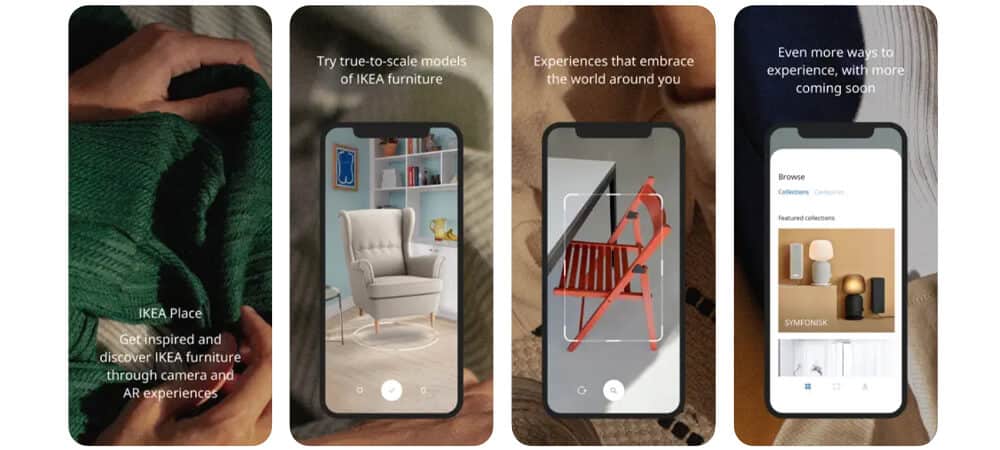
Image attribution: Apple
Raise the Reputation of the Brand
Marketing goes far beyond a single product. Successful marketing also pushes for widespread brand recognition and loyalty. The best marketing makes someone aware of both a product and the company behind it. Likewise, it should also create a long-lasting emotional bond. When someone sees your brand, they should feel a jolt of happiness as they recall positive memories related to it. AR marketing is perfectly positioned to create these emotional reactions.
The main reason is that augmented reality is both relatively new and immersive. This helps to create long-lasting positive emotions within a user base. What’s more, this experience is also something that people will tell their friends about. The best kind of marketing turns happy customers into an active part of the process. When someone tells a friend about how much fun an AR-related app is, he’s sharing a positive experience and helping the marketing campaign.
Tours & Assistance
People often consider augmented reality a service that lets you peek into the digital realm. But it’s important to remember that AR is more of a bridge between worlds. Augmented reality is part of the metaverse. And the underlying metaverse meaning is solidly set into bridging the digital and physical worlds. AR marketing often leverages that fact to integrate digital assistance into physical locations.
For example, imagine that you’ve walked into a shop. An unfamiliar object catches your attention. An augmented reality system might be able to instantly bring up how that object could work within your lifestyle. And the reverse can happen as well. Augmented reality can let people take a look at distant places. For example, you could use AR to buy tickets to an event. The process would let you virtually “sit” in the seats you’re considering to check out the view.
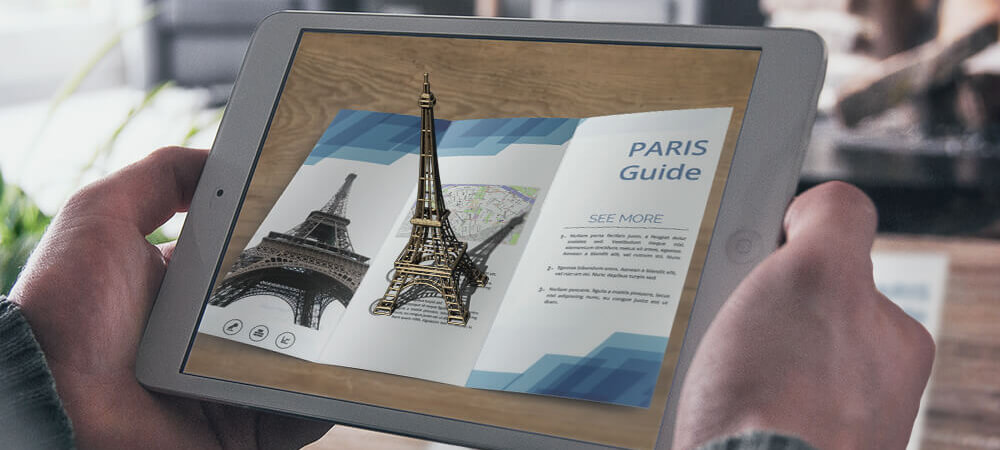
Image attribution: Zumoko
AR Marketing Materials
If you’ve ever used a QR code, then you’ve already used an early form of AR marketing. Take that idea and now imagine how amazing it’d be if, when you moved your phone over a QR code on a brochure, you actually saw embedded video within that area. Or even 3D recreations of some of the sights you might be able to experience. And consider how useful it’d be if you could hold your phone over a business card.
Then use one of many contact options by simply clicking a link instead of manually typing in phone numbers or social media account names. Augmented reality can let physical material function just like a website. You can introduce all of the ease of use found on the Internet into analog material like business cards, pamphlets, magazines, and books. Augmented reality essentially provides the best of both analog and digital experiences.
6 Great Examples of AR Marketing
Now that you’ve seen how companies use AR marketing, it’s time to look at some of the biggest players. The following companies combine an established market presence with incredibly innovative use of AR marketing strategies. As you’ll soon see, combining these two elements can lead to some truly impressive results.
Snap
One of the common points of discussion in metaverse events centers on the shared nature of the medium. It’s common to see companies leveraging that trait within virtual reality. But Snap has done an exemplary job of using AR marketing to forge real connections. Snap’s “City Painter” lets users spray paint above Carnaby Street’s shops to create murals. But it’s not just a visual that you’ll personally experience. The changes are visible to everyone using the app. Snap hopes to continue development to create a shared virtual world. Carnaby Street is the first significant landmark added to Snap’s system.
Video: City Painter by Snapchat
Home Depot
Have you ever wished you could know what a room would look like before you committed yourself to painting it? What if you could see the room with various color combinations? Home Depot has been able to do exactly that, thanks to its new AR marketing effort. The company’s Project Color lets you see how rooms in your home would look after painting them with some of Home Depot’s options. But the system goes beyond just changing wall colors. It also takes lighting, furniture, and even shadows into account. You can truly see your home in a different light.
Video: Augmented Reality | The Home Depot Mobile App
Machine-A
You’ve seen some of the ways that AR marketing can go hand in hand with fashion. And Machine-A, a London-based fashion-focused store, has its unique spin on the concept. Their implementation was born out of necessity when the London fashion week was canceled. Machine-A devised a QR-code system that, when scanned, would launch an augmented reality system on the user’s phone. Machine-A describes it as a bridge between IRL and URL. The company’s QR system lets people essentially enter a virtual boutique. Marketing is particularly effective and wide-reaching in that it functions as both standard and digital advertising.
Video: A Tour of MACHINE-A & Institute of Digital Fashion’s Augmented LFW Filter
Sephora
Sephora is one of the best-known companies in the world for a good reason. The makeup-focused company provides products that most people want to avoid buying online. It’s hard to know what you’ll look like with any product since it’s such an individual experience. And as a result, even people who prefer online shopping go to Sephora in person. But Sephora is using AR marketing to let everyone buy makeup in a way that they’re comfortable with. The company has leveraged Modiface technology to enable high-tech facial scanning. You can then digitally apply Sephora makeup to your lips and eyes.
Video: Sephora Virtual Artist App
Pepsi
Pepsi’s approach to AR marketing probably isn’t in the budget of any but the most successful companies. But Pepsi’s widespread deployment of AR displays is undoubtedly getting them a lot of attention. Pepsi has positioned digital display panels within bus stop windows. A built-in camera can take video from that area. And when people walk near the display, they can suddenly find themselves right there amid the virtual action. It’s a striking display that most people want to share with others. And when they do, it essentially acts as advertising via word of mouth for Pepsi.
Video: Pepsi Max’s Bus Shelter commercial
Treasury Wine Estates
Stories are one of humanity’s defining characteristics. Everyone loves to hear, tell, and experience stories. And if it’s accompanied by some fine wine, then all the better. Treasury Wine Estates has built on that concept by leveraging AR marketing through storytelling. They want a bottle of wine to convey both emotion and narrative. And it can do so with augmented reality. Customers will discover new characters and story elements by using AR with different bottles. And this will, in turn, prompt them to try out different varieties of wine. Customers can enjoy new flavors while the company benefits as well.
Video: 19 Crimes Augmented Reality – Treasury Wine Estates
AR Marketing Stands Alongside VR Tourism
AR marketing gives companies a way of bringing products into the hands of people in remote locations. But extended reality technologies can also get people to distant shores. Virtual reality tourism is a new industry that is, in many ways, the VR mirror of AR marketing. VR tourism works through a variety of different methods. But they all allow you to use VR to experience virtual trips to some of the most exciting places on earth. The article “VR Tourism; Top Virtual Reality Examples in the Tourism Industry” shows how VR tourism is evolving alongside augmented reality.
AR Marketing Points the Way to Amazing New Trends
AR marketing highlights how well metaverse brands are integrating themselves into the world. The metaverse is the future. But you might be surprised by just how quickly this digital realm has become mainstream. The metaverse has already surpassed some significant milestones. For example, NFT technologies have opened the door to unique items and accessories in metaverse games. And fantastic new achievements like more lifelike avatars, corporate solutions, and entertainment events are on the horizon. The article “Metaverse Trends; Upcoming Milestones for the Digital Frontier” shows how augmented reality and similar technologies are evolving.
AR marketing might seem like science fiction. But, as you’ve seen, it’s here and ready for both companies and consumers alike to enjoy. You can give it a try right now and get a look at the future of marketing.
Did You Like This Article About AR Marketing?
You might also be interested in the following articles:
- Metaverse Summits; Top Reasons to Attend a Metaverse Summit
- Meta Quest Pro; Meta’s Project Cambria Finally Released!
- The 10 Best Metaverse Podcasts That Will Educate & Entertain

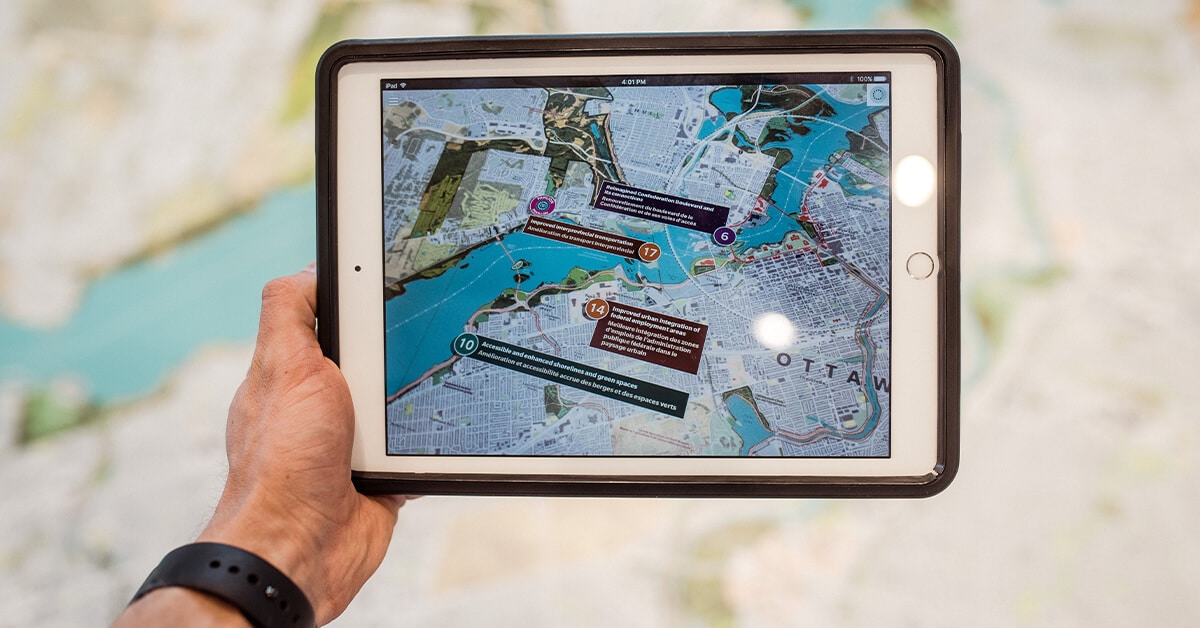
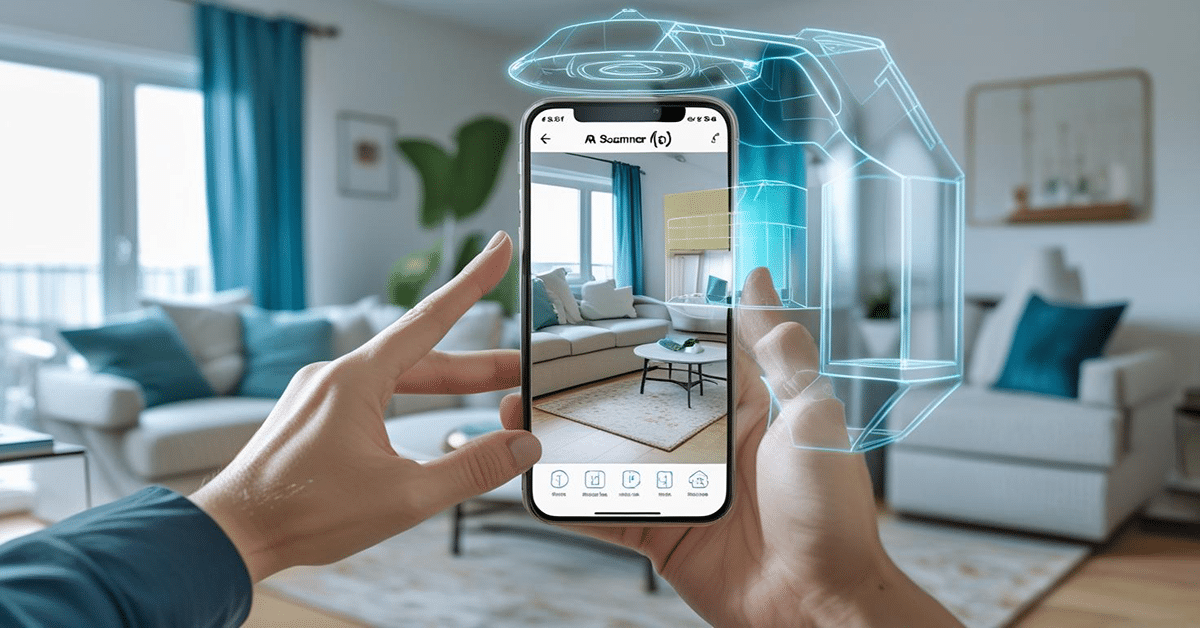
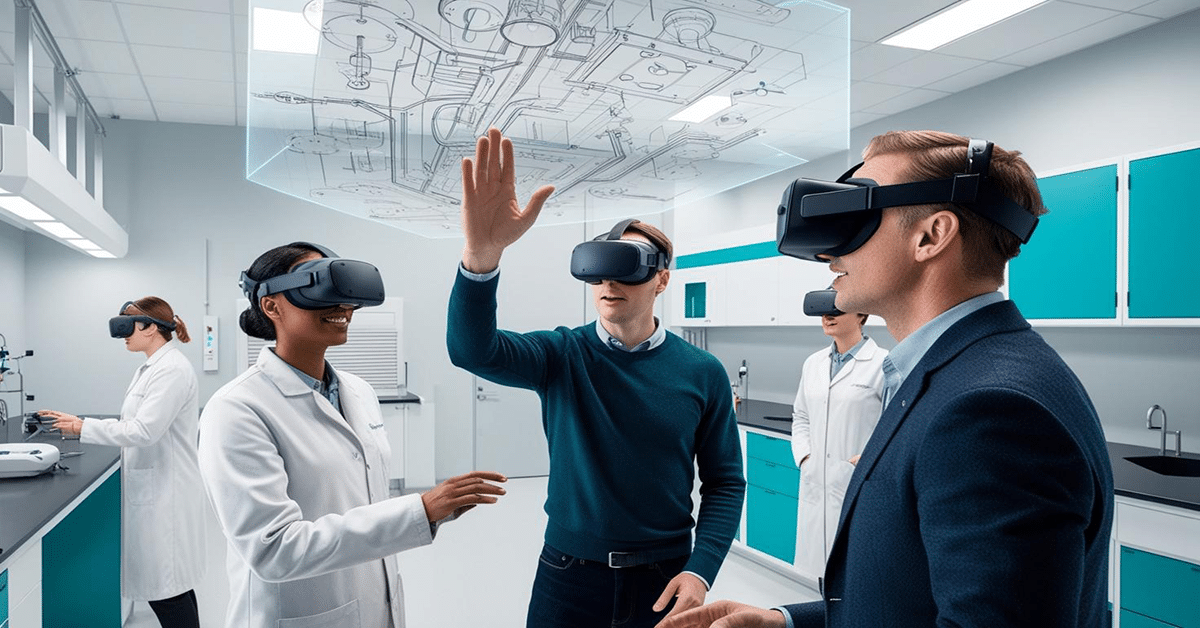
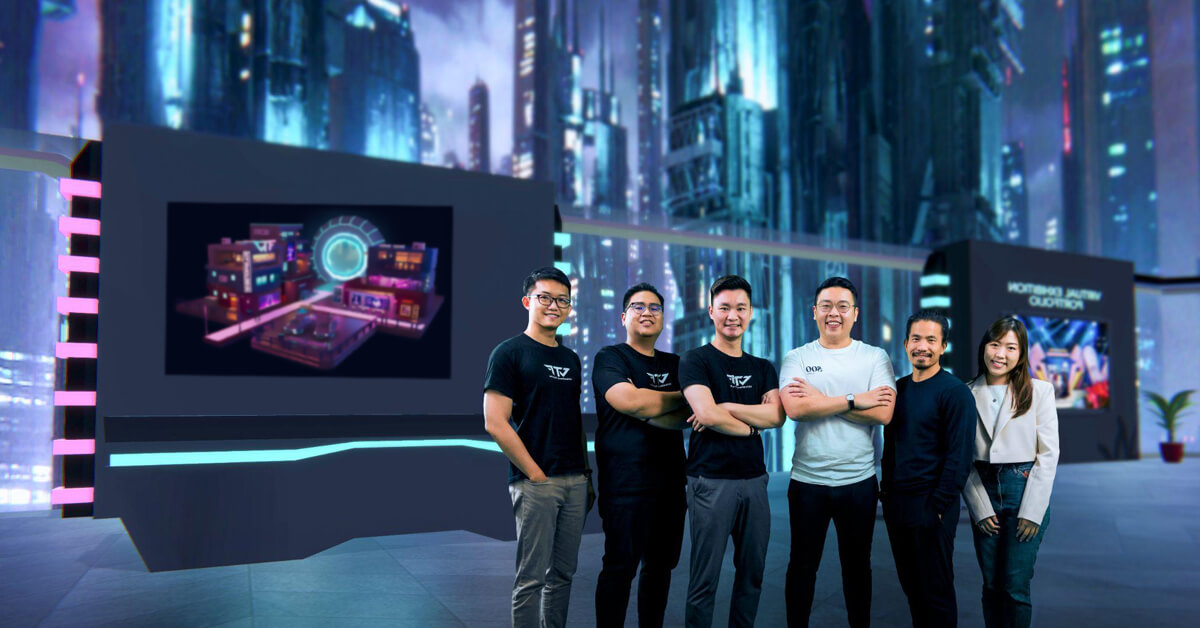




Leave A Comment